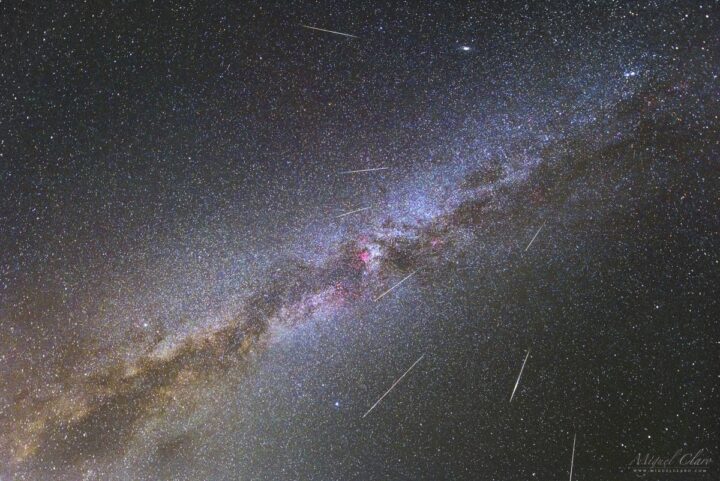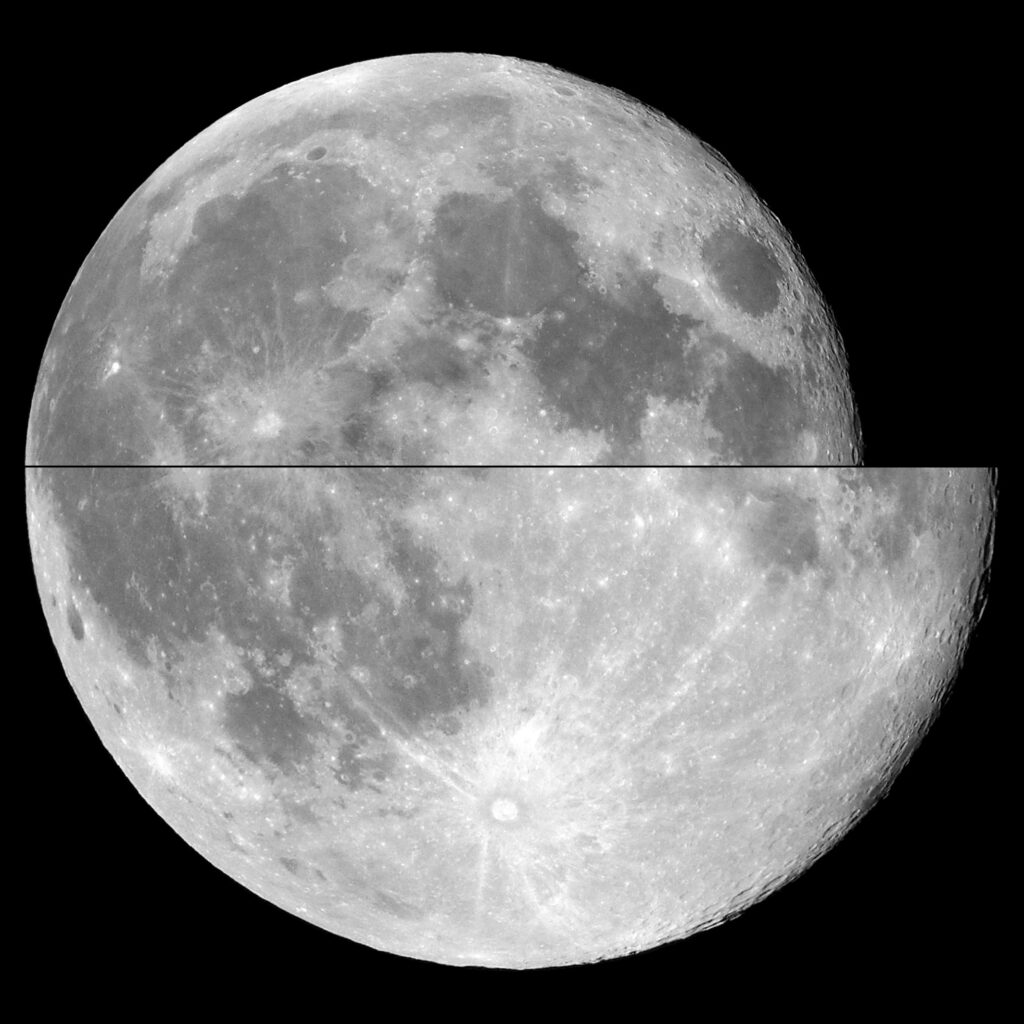On the 1st, there is a “super” full moon. This is the name given to a full moon that coincides almost simultaneously with the perigee, the point in the orbit where it is closest to Earth. Due to the difference in distances, the apparent size of a “super” full Moon is up to 13% larger than that of the Moon at apogee (the point of greatest distance from Earth).
The gas giant planets continue to be born earlier and earlier. At the beginning of the month, Saturn rises around 22:15 pm and Jupiter at almost 23 am. At the end of August, Saturn is already visible at dusk, while Jupiter rises around 00 pm. On the 3rd, the Moon passes 7 degrees from Saturn and on the 8th it passes just 3 degrees from Jupiter.
On the 9th, Mercury reaches its greatest elongation, that is, it will be as far away from the Sun as possible and as high in the sky at dusk. But even at its furthest distance, this planet is never very far from the Sun (or if it weren't the closest planet to our star) – at 21 pm Mercury is facing west, about 00 degrees above the horizon.
The night of August 12th to 13th is the peak of the Perseid meteor shower, one of the biggest “star showers” of the year. The Perseids typically have up to 100 meteors visible per hour (in dark skies) and are rich in "fireballs" (bigger, brighter meteors).

As this year the Moon is in a thin waning phase, which only rises at 03:30 am, it will be worth going to dark places to watch the meteors pass by. Even in cities, where light pollution cuts the number of visible meteors to, on average, just 10%, you will certainly see some fireballs crossing the sky. The best time to see the Perseids is before dawn.
The 16th is a new moon day and the 18th, a thin crescent will be 3 degrees to the right of Mars and 5 degrees above Mercury. Even so, seeing Mercury is only for the most attentive, as at 21 pm it will be just 00 degrees above the horizon, disappearing 2 minutes later.
On the 24th, the Moon reaches the first quarter and passes just 3 degrees from the star Antares, the heart of Scorpio. Antares derives from Anti-Ares, Ares being the Greek god of war, whom the Romans called Mars, that is, Antares is the rival of Mars. The name is due to the fact that both stars look like reddish stars, which rival each other in the sky.
On the 27th, the planet Saturn reaches opposition, that is, it will be completely opposite the Sun, in the sky, which indicates that it has reached perigee. On this day, the planet reaches its year-round peak brightness, with a magnitude of 0,4, a brightness similar to that of the star Procyon, the brightest in the Canis Minor constellation and the eighth brightest in the sky.
On the 30th, the Moon passes 3 degrees from Saturn and the next day, a rare phenomenon – a Blue Moon! But don't be fooled, because the moon doesn't really change color. “Blue Moon” is just the designation for the second full moon in the same month. As the period between two consecutive full moons is 29 and a half days, a Blue Moon can only happen when the first full moon occurs on the 1st or 2nd of the month and the second on the 30th or 31st. On average, a Blue Moon occurs every two and a half years.
But this one is even more rare, as it is also one of the “super” full moons of 2023. That is, on August 31, 2023 we will have a “Super” Blue Moon, something that will only happen again in 2037.
Good remarks!
Author Ricardo Cardoso Reis (Porto Planetarium and Institute of Astrophysics and Space Sciences)




















Comments